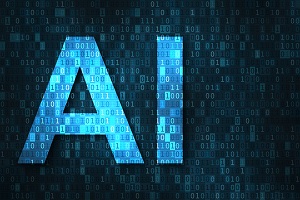Data Scientist continues its reign as one of the most coveted jobs in 2020. In fact, as the business world becomes increasingly data-driven, there is a serious concern that the data science skill gap will continue widening and the supply of data scientist career talent won’t be able to catch up to the industries’ demand. For the 3rd consecutive year, our friends at 365 Data Science asked the data and collected their findings in a detailed annual report summarized in the included infographic.
Interview: Mike Hudy, Ph.D., Chief Science Officer at Modern Hire
I recently caught up with Mike Hudy, Ph.D., Chief Science Officer at Modern Hire, to discuss the use of AI in the hiring process. Hint: it includes a robust and specific code of ethics, implementation with a specific problem in mind, and lots of transparency.
How AI is Shifting Workplace Dynamics and Winning Top Talent
In this special guest feature, Claus Jepsen, Deputy CTO at Unit4, AI has risen as a main focus point for its ability to accelerate processes and help organizations remain competitive in today’s unpredictable landscape. However, the benefits of AI go far beyond improved business operations and its potential to improve the internal workplace experience is often overlooked.
What Employers Should Consider in Big Data Hiring
In this contributed article, freelance human Avery Phillips discusses the many things you need to consider when hiring for big data. Thinking about the nature of your organization, the potential roles, and responsibilities of your data employees, what you aim to achieve through the use of big data, and finally, considering budget; is a good place to start when it comes to big data hiring.
2019 U.S. Emerging Jobs Report
In the third annual LinkedIn Emerging Jobs Report, AI Specialist took the number one spot, with 74% annual growth in hiring for this role in the past four years. Below, Romer Rosales, Senior Director of Artificial Intelligence at LinkedIn, shares skills that are important for AI Specialists and thoughts on the massive growth of this position.
Interview: Tammy Wang, VP of Data Science and Engineering at Riviera Partners
I recently caught up with Tammy Wang, VP of Data Science and Engineering at Riviera Partners to discuss her company’s partnering with the University of Virginia Economics department to build an AI-powered application that can help people successfully navigate STEM career paths, with a focus on developing a long-term career trajectory in tech. The solution has the potential to impact U.S. labor supply by addressing the increasing demand for technology talent, which has resulted from the rapid digitization and automation of the labor market.
How Big Data Is Changing the Job Market
In this contributed article, Magnolia Potter explains how big data has had a significant impact on the way candidates look for jobs, as well as on how employers make hiring decisions. Also provided are some of the ways in which big data has changed the job market.
What to Ask Yourself when Hiring a Data Scientist
In this special guest feature, Aria Haghighi, VP of Data Science at Amperity, discusses several important questions to ask yourself when hiring a data scientist. Hiring data scientists is hard. They’re hard to find since there are fewer trained than can meet demand, and it’s challenging to properly interview and vet them (especially the first in your organization).
AI and the Future of Work
ZipRecruiter released their latest Future of Work report – examining how AI will impact future career opportunities and how humans and technology will work together. Interestingly, the report notes that “the most successful applications of AI have been when used in partnership with humans, rather than as a replacement” – directly contradicting most employees’ fear […]
Addressing Demographic Pay Gaps with Data-driven Solutions
In this special guest feature, Dr. Margrét Vilborg Bjarnadóttir, Assistant Professor of Management Science and Statistics at the University of Maryland Robert H. Smith School of Business, suggests that despite massive cultural and societal pushes for gender equality, the gender pay gap in the workplace remains as strong as ever. Data analysis and visualization could play a vital role in helping to resolve this important issue.












